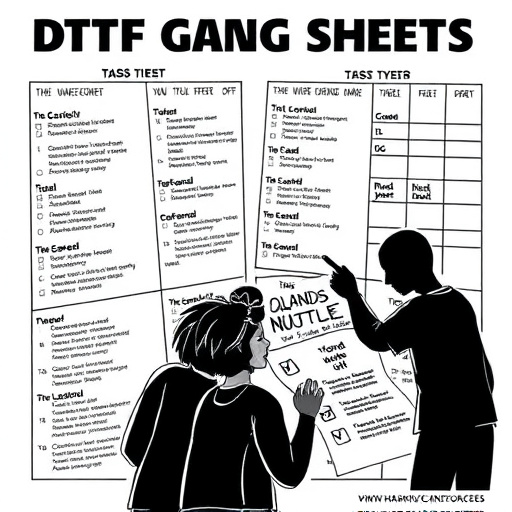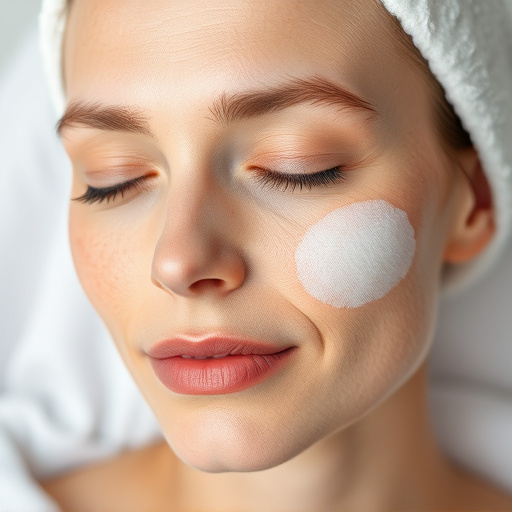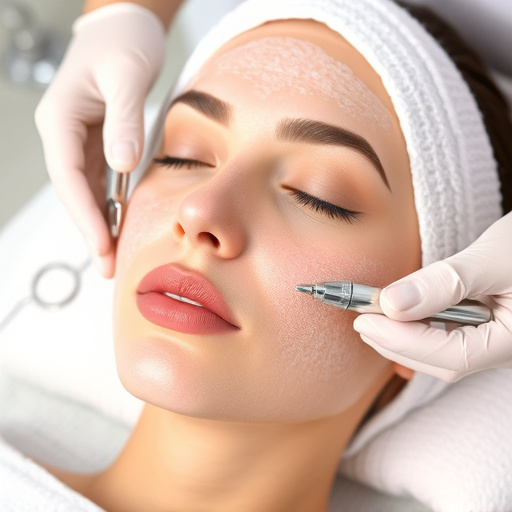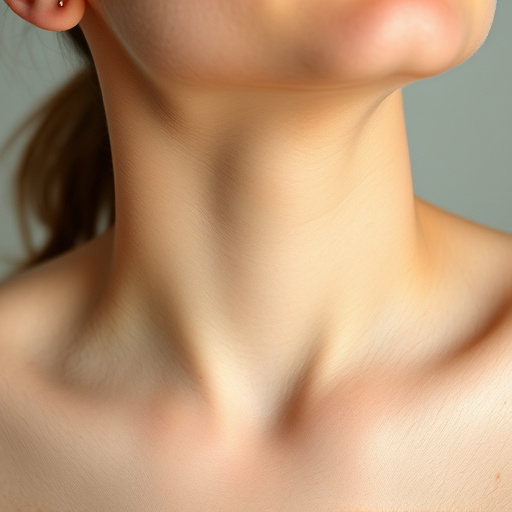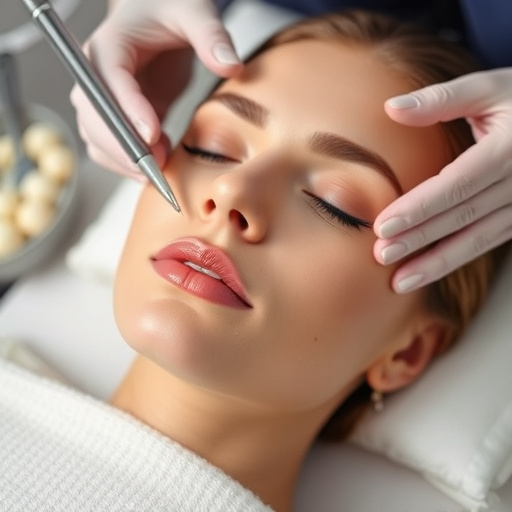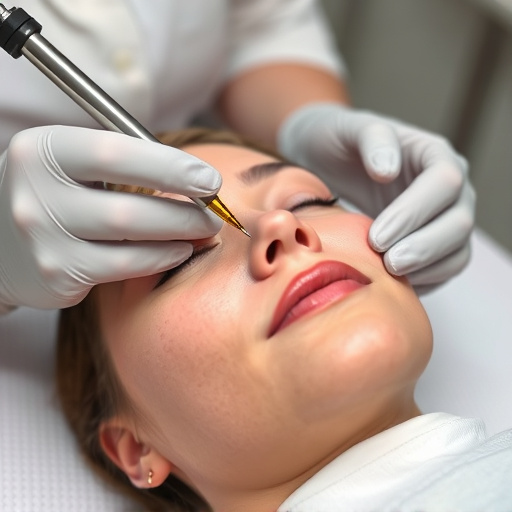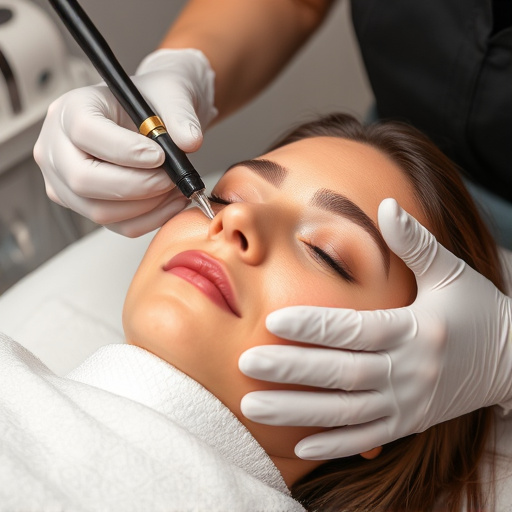Understanding skin types is key to effective teenage acne treatment. Identify your skin type and triggers through a diary. Use gentle cleansers, exfoliants, and hydrators for daily care. Combine OTC topical solutions with spot treatments. Consult a dermatologist for severe or persistent cases.
Struggling with teenage acne? This comprehensive guide offers a simple, step-by-step approach for beginners to tackle this common issue. First, understand your skin: identify triggers and different types of acne. Next, learn how to cleanse and exfoliate gently to unclog pores. Then, discover effective topical treatments and spot care techniques. By following these expert tips, you’ll be on your way to achieving clearer, healthier skin.
- Understand Your Skin: Identify Triggers and Types
- Cleanse and Exfoliate: Unclogging Pores and Gentle Care
- Target Acne with Topical Treatments and Spot Care
Understand Your Skin: Identify Triggers and Types
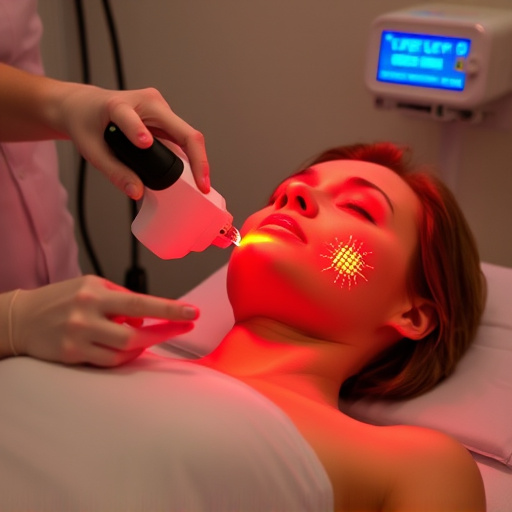
Understanding your skin is a crucial step in developing an effective teenage acne treatment routine. Acne can be caused by various factors, including hormonal changes, genetic predisposition, and environmental influences. Identifying your skin type—whether it’s normal, oily, dry, or combination—is essential as it dictates the products best suited for your needs. For instance, those with oily skin might require mattifying products to control shine, while individuals with dry skin will benefit from hydrating formulas.
Additionally, pinpointing triggers can help you manage and prevent acne breakouts. Common culprits include stress, certain foods (like dairy or high-glycemic index items), makeup, and even clothing that irritates the skin. Keeping a diary to track these factors can be insightful in identifying patterns and developing strategies to minimize their impact on your skin’s health. Remember, professional skincare advice from dermatologists is invaluable for personalized guidance tailored to your specific acne concerns, whether it’s managing inflammation, reducing wrinkles (a side effect that may occur with prolonged acne), or achieving a clearer, healthier complexion.
Cleanse and Exfoliate: Unclogging Pores and Gentle Care
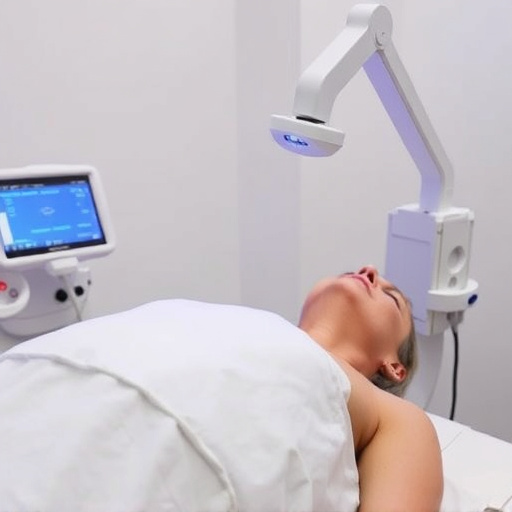
Acne is a common issue among teenagers due to hormonal changes and increased sebum production. To start your teenage acne treatment journey, begin with a gentle cleansing routine. Use a mild cleanser that doesn’t strip away natural oils to avoid further irritation. This step is crucial in unclogging pores and preventing the buildup of dirt and excess oil.
Once or twice weekly, incorporate an exfoliator into your skincare regimen. Opt for a chemical exfoliant with AHAs (alpha hydroxy acids) or BHAs (beta hydroxy acids) for their pore-refining properties. These ingredients help dislodge trapped sebum and dead skin cells, promoting healthier skin. Remember, when it comes to teenage acne treatment, gentleness is key. Always follow up with a hydrating facial to restore moisture levels in your skin, as effective cleansing and exfoliation can sometimes leave the skin feeling dry.
Target Acne with Topical Treatments and Spot Care
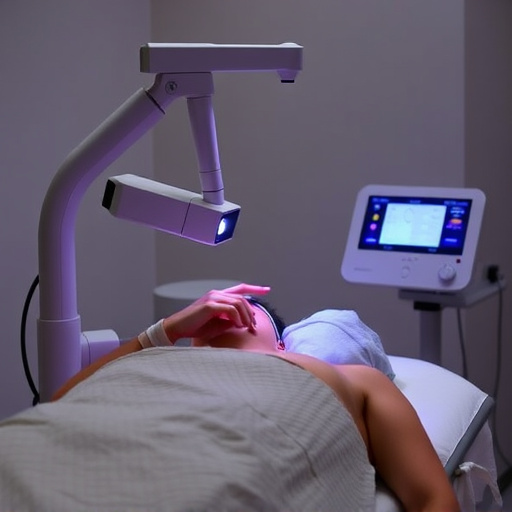
When it comes to tackling teenage acne, a strategic approach with targeted treatments is key. Start by incorporating over-the-counter (OTC) topical solutions into your daily skincare routine. Look for products containing active ingredients like benzoyl peroxide or salicylic acid, which are renowned for their antibacterial and exfoliating properties, helping to unclog pores and reduce inflammation. These ingredients can be found in various forms such as gels, creams, and lotions, catering to different skin types.
For spot care, consider using spot treatments designed specifically for acne-prone areas. These treatments often contain higher concentrations of active ingredients and are applied directly to individual blemishes. While OTC options are a great starting point, if your acne persists or becomes severe, it’s time to consult a dermatologist. They can offer professional skincare advice and recommend more potent topical treatments, including prescription medications, as well as suggest customized facials tailored to your skin’s unique needs, ultimately promoting clear, radiant skin and enhancing your overall teenage acne treatment experience.
Acne can be a challenging experience for teenagers, but with a simple, step-by-step routine, it’s manageable. By understanding your skin, cleansing effectively, exfoliating gently, and targeting blemishes with the right treatments, you can significantly improve your complexion. Remember, consistency is key when it comes to teenage acne treatment—stick to your routine, identify triggers, and consult a dermatologist if needed. With time and patience, you can achieve clearer, healthier skin.





